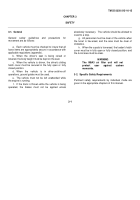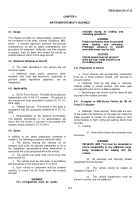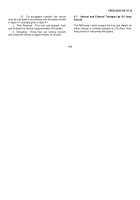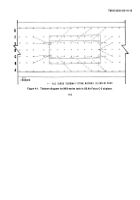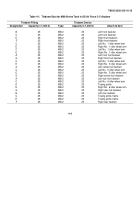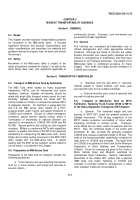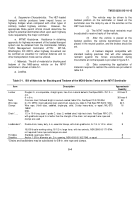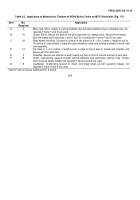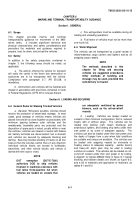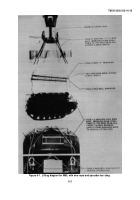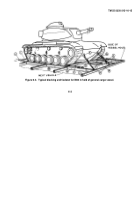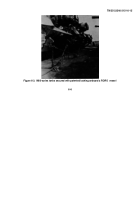TM-55-2350-215-10-15 - Page 33 of 66
TM 55-2350-215-10-15
CHAPTER 6
MARINE AND TERMINAL TRANSPORTABILITY GUIDANCE
Section I.
GENERAL
6-1.
Scope
This
chapter
provides
marine
and
terminal
transportability guidance for movement of the M60-
series tanks.
It includes significant technical and
physical characteristics and safety considerations and
prescribes the materials and guidance required to
prepare, load, tie down, and unload the vehicles.
6-2.
Safety
In addition to the safety precautions contained in
chapter 3, the following areas should be noted, as
applicable:
a
.
The activity offering the vehicle for transport
will notify the carrier in the event that ammunition or
explosives are to be transported with the vehicle.
Compliance with paragraph 2-7, AR 55-228, is
mandatory.
b
.
Ammunition and vehicles will be handled and
stowed in accordance with provisions contained in Code
of Federal Regulations (CFR) 49 or reissues thereof.
c.
Fire extinguishers must be available during all
loading and unloading operations.
d
.
Fuel tanks of vehicles must not be more than
one-fourth full.
6-3.
Water Shipment
The vehicles can be transported by a great variety of
inland-waterway cargo carriers and lighters and by all
seagoing cargo vessels.
NOTE
The methods described in this
chapter for lifting and securing
vehicles are suggested procedures.
Other methods of handling and
stowage may be used, provided that
safe delivery is insured.
Section II.
LOADING AND SECURING
6-4.
General Rules for Stowing Tracked Vehicles
a.
General
.
Whenever possible, vehicles should
receive the protection of below-deck stowage.
In most
cases, good stowage of vehicles means vehicles are
placed fore and aft as close together as practicable, with
minimum spacing between outer vehicles and the
sweatboards; breakable parts are protected and the
disposition of spare parts is noted, usually within or near
the vehicles; vehicles are stowed in neutral with brakes
set; battery terminals are disconnected; fuel is drained;
and vehicles are secured by adequate blocking and
lashing.
Securing includes blocking of tracks on all four
sides so that the vehicles cannot move in any direction;
individual vehicle blocks are braced to bulkheads,
stanchions, and other vehicle blocks; and vehicle is
lashed with wire rope or chain.
NOTE
DOT
exemption
(DOT-E-7280)
authorizes DOD to ship vehicles
involved in readiness exercises with
fuel tanks three-quarters full when
vehicles are loaded on vessels that
are adequately ventilated by power
blowers, such as the roll-on/roll-off
vessels.
b.
Loading
.
Vehicles are always loaded on
vessels in their minimum configuration; that is, reduced
height, with or without cargo.
The vehicles can be
loaded onto landing craft, beach discharge and
amphibious lighters, and landing ship tanks under their
own power or by crane of adequate capacity.
The
vehicles can also be loaded under their own power onto
the decks of barges from a pier when tidal conditions
are suitable and ramps are available.
The vehicles can
be loaded onto seagoing vessels by shoreside or
floating cranes of adequate capacity.
Jumbo booms
and heavy-lift ship's gear may be used in loading
vehicles on vessels.
The vehicles can be loaded on roll-
on/roll-off vessels under their own power or by towing.
A diagram for typical M60A2 lifting is figure 6-1; typical
blocking and tiedown details are shown as figure 6-2;
and a bill of materials and application of materials, as
tables 6-1 and 6-2.
6-1
Back to Top

